AWS Certified AI Practitioner(4) - Fine-Tuning & Model Selection
📚 Amazon Bedrock Fine-Tuning & Model Selection
1. Different Providers & Model Capabilities
- Providers: Anthropic, Amazon, DeepSeek, Stability AI, etc.
- Models vary in strengths:
- Claude 3.5 Haiku → Best for text tasks.
- Amazon Nova Reel → Text-to-video / Image-to-video.
- Exam Tip: You will not be tested on which is best, only on what each can or cannot do.
2. Comparing Models
- Compare Mode: Test models side-by-side in Bedrock playground.
- Compare by:
- ✅ Capabilities (text, image, video)
- ✅ Output style/format
- ✅ Speed (latency)
- ✅ Cost (token usage)
- Example:
- Nova Micro: ❌ No image upload, faster, shorter responses.
- Claude 3.5 Sonnet: ✅ Image support, longer/more detailed answers.

3. Fine-Tuning Methods – Comparison Table
| Feature | Instruction-Based Fine-Tuning | Continued Pre-Training | Transfer Learning |
|---|---|---|---|
| Data Type | Labeled (prompt–response pairs) | Unlabeled (raw text) | Labeled or Unlabeled |
| Goal | Improve performance on domain-specific tasks | Make model expert in a specific domain | Adapt a pre-trained model to a new but related task |
| Example | Train chatbot to respond in a specific tone | Feed all AWS docs to become AWS expert | Adapt GPT for medical text classification |
| Changes Model Weights? | ✅ Yes | ✅ Yes | ✅ Yes |
| Complexity | Medium | High | Varies |
| Cost | Lower (less data) | Higher (more data) | Varies |
| Exam Keyword | “Labeled data”, “prompt-response” | “Unlabeled data”, “domain adaptation” | “Adapt model to new task” |
| Bedrock Support | Supported on some models | Supported on some models | General ML concept (not Bedrock-specific) |
Instruction-based Fine Tuning
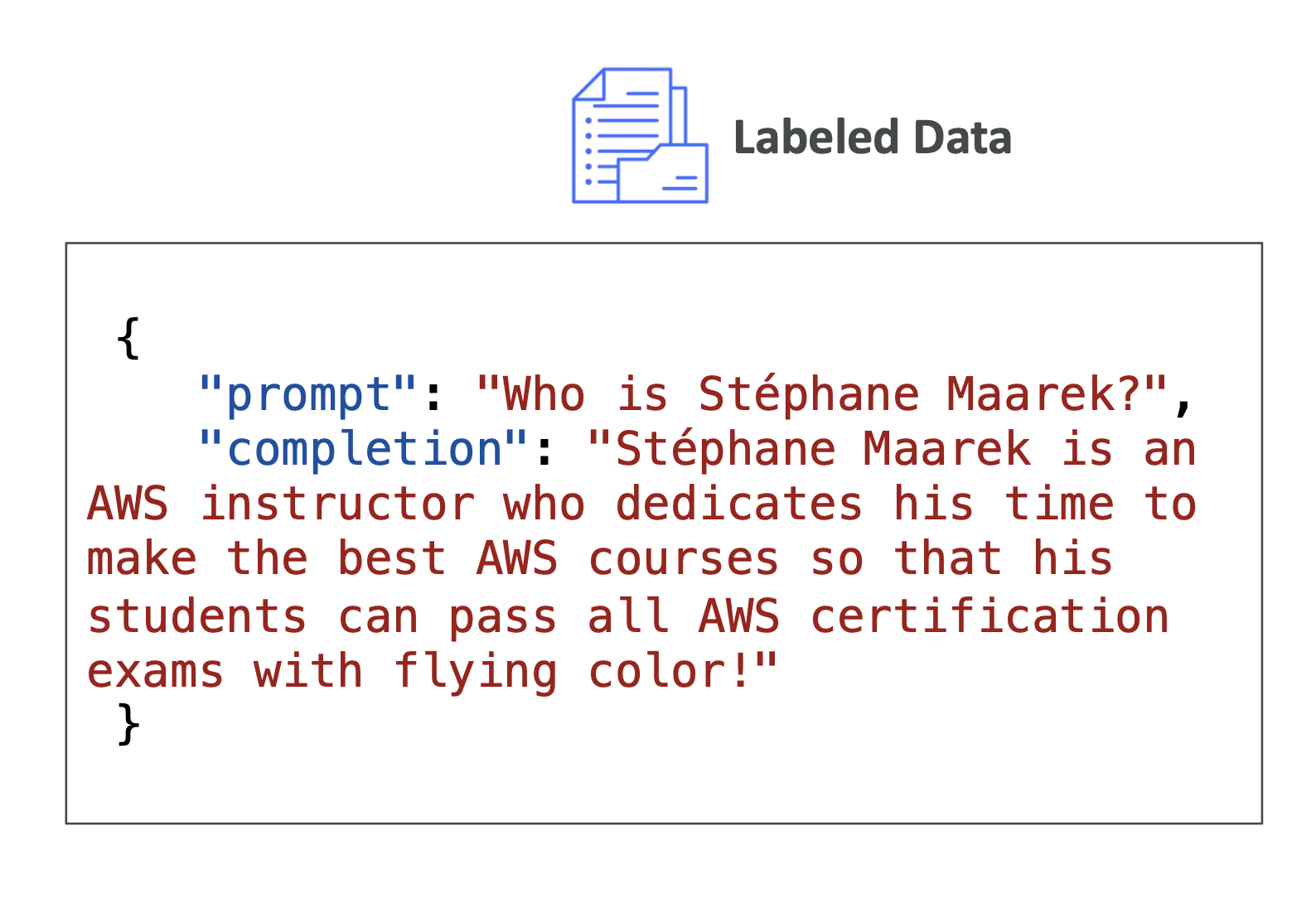
Continued Pre-training
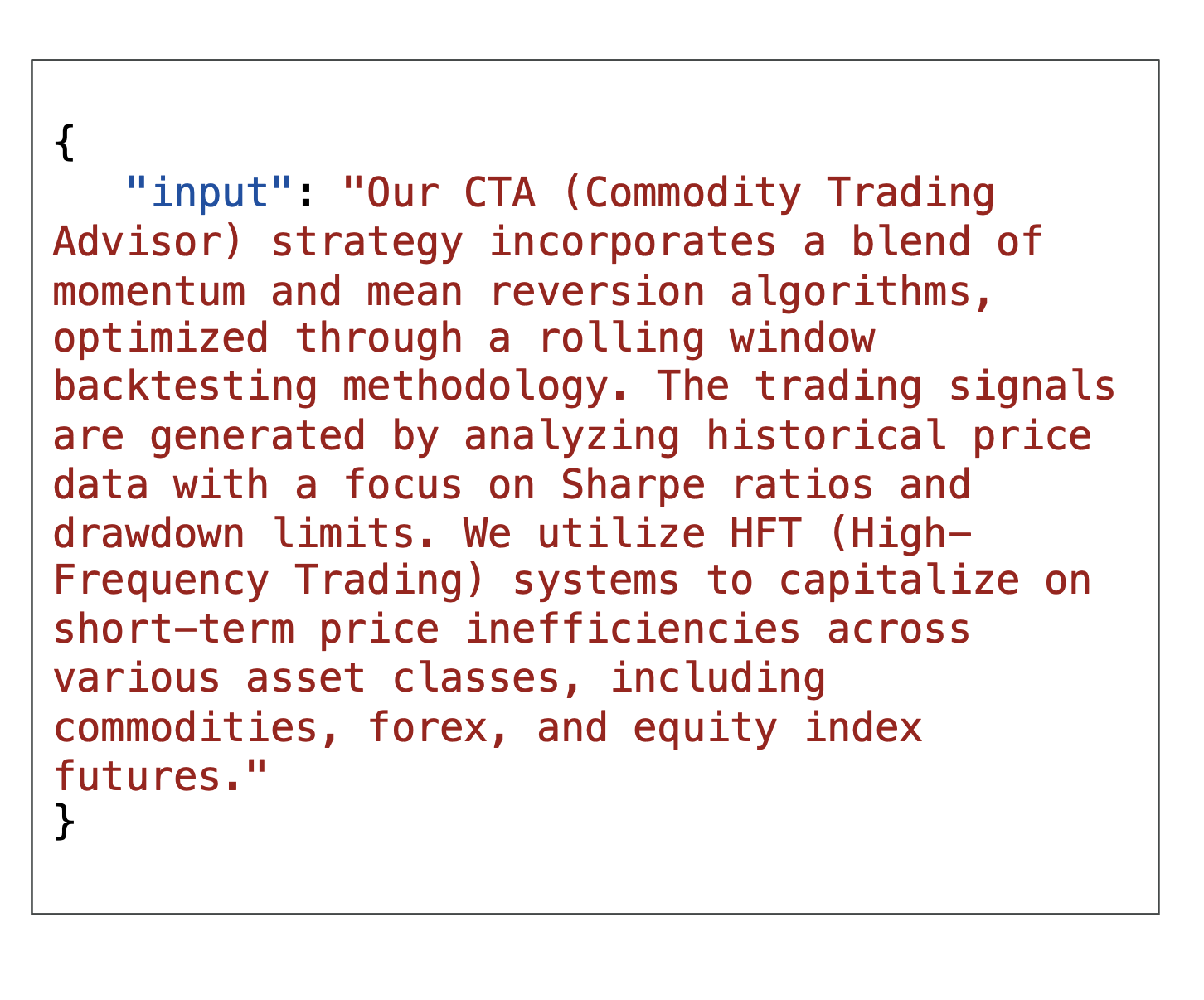
4. Messaging Fine-Tuning
- Single-Turn Messaging:
- One Q → One A
- Optional
systemcontext
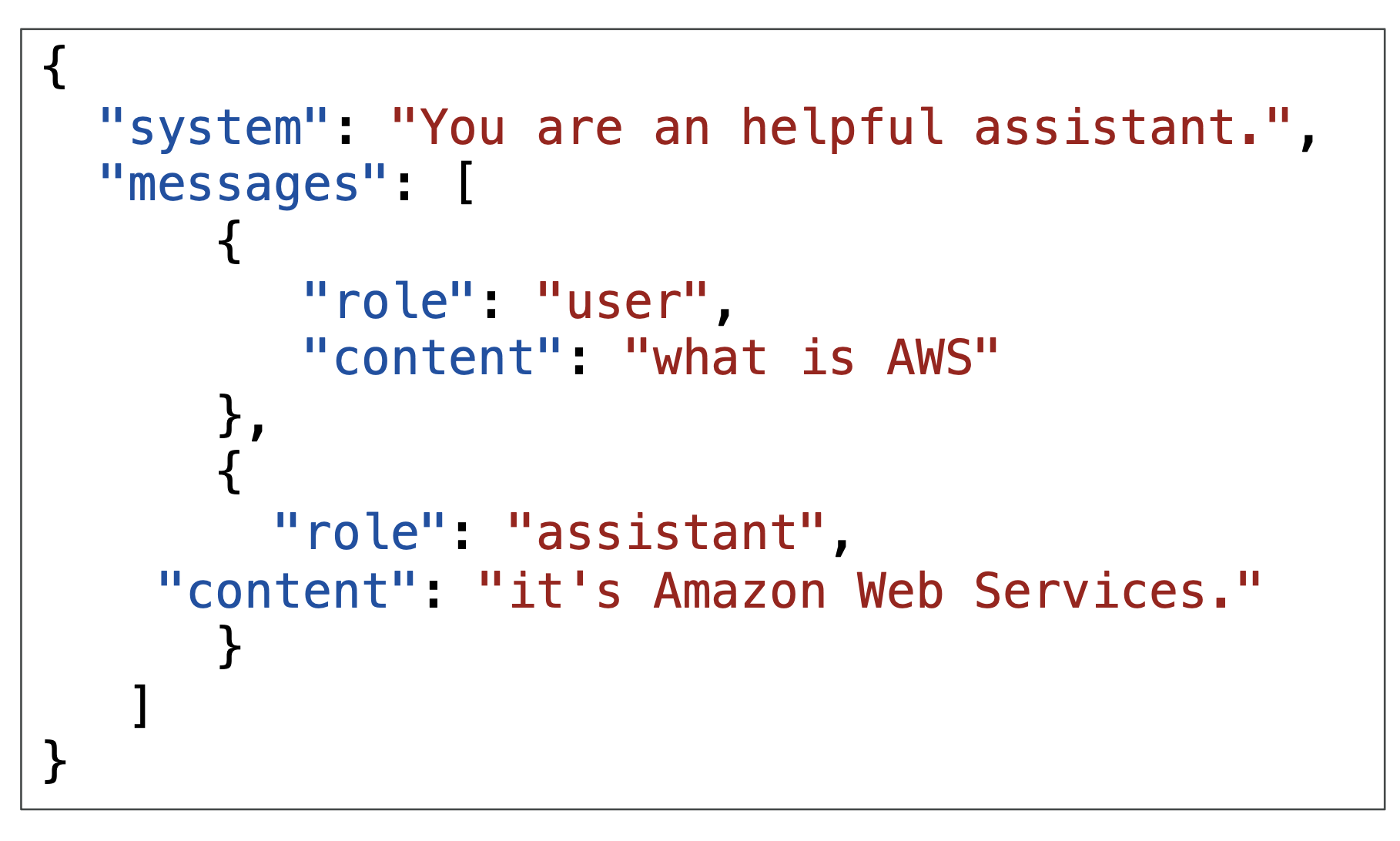
- Multi-Turn Messaging:
- Full conversations, alternating
userandassistant - Used for chatbot training in multi-step dialog
- Full conversations, alternating
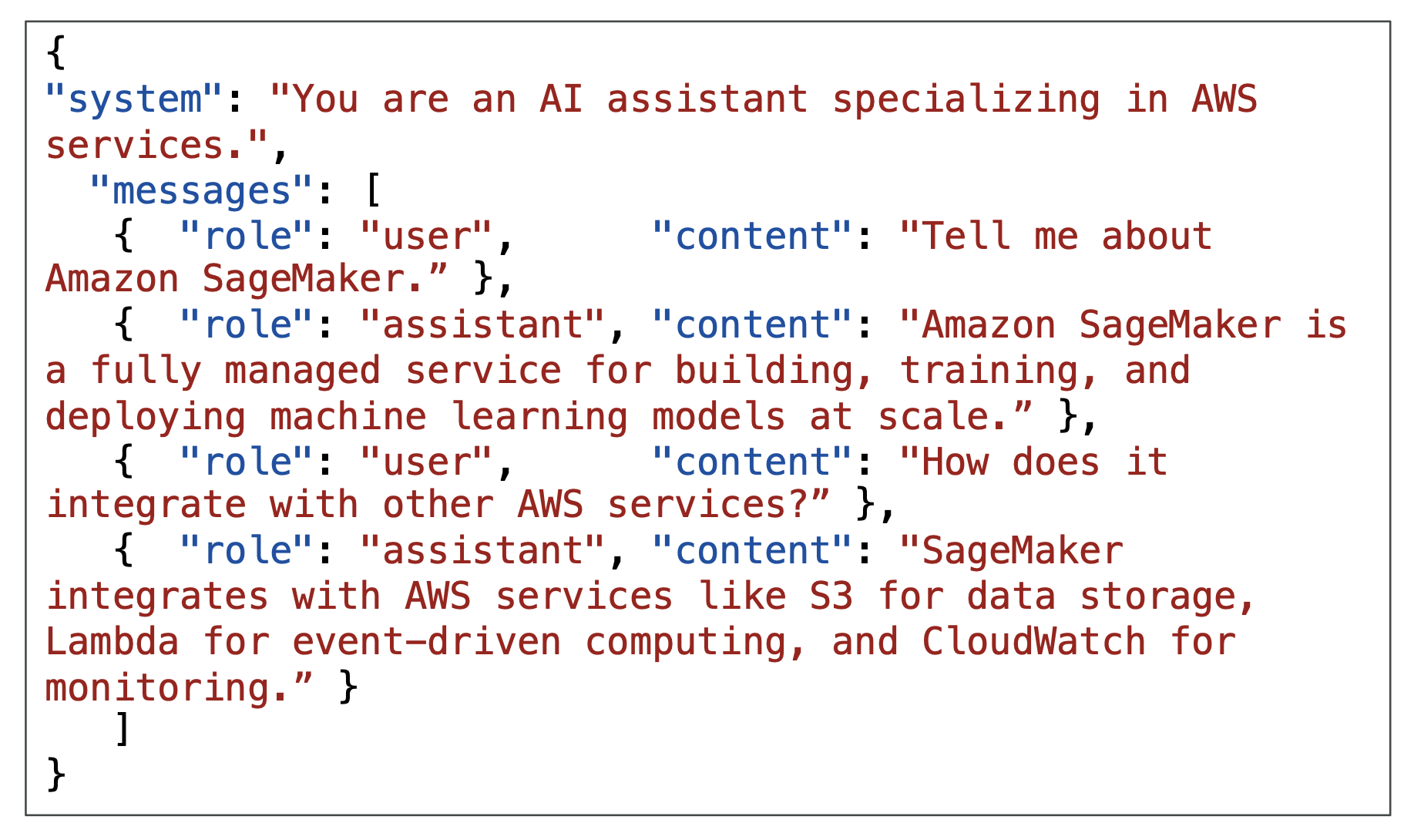
5. Transfer Learning
- Definition: Using a pre-trained model for a new but related task.
- Common in:
- Image classification
- NLP (BERT, GPT)
- Exam Tip: If question is general ML → choose Transfer Learning as the answer.
If it’s about Bedrock & domain-specific → choose Fine-Tuning.
6. Fine-Tuning Requirements in Amazon Bedrock
- Training data must:
- Be in Amazon S3
- Follow specific formatting
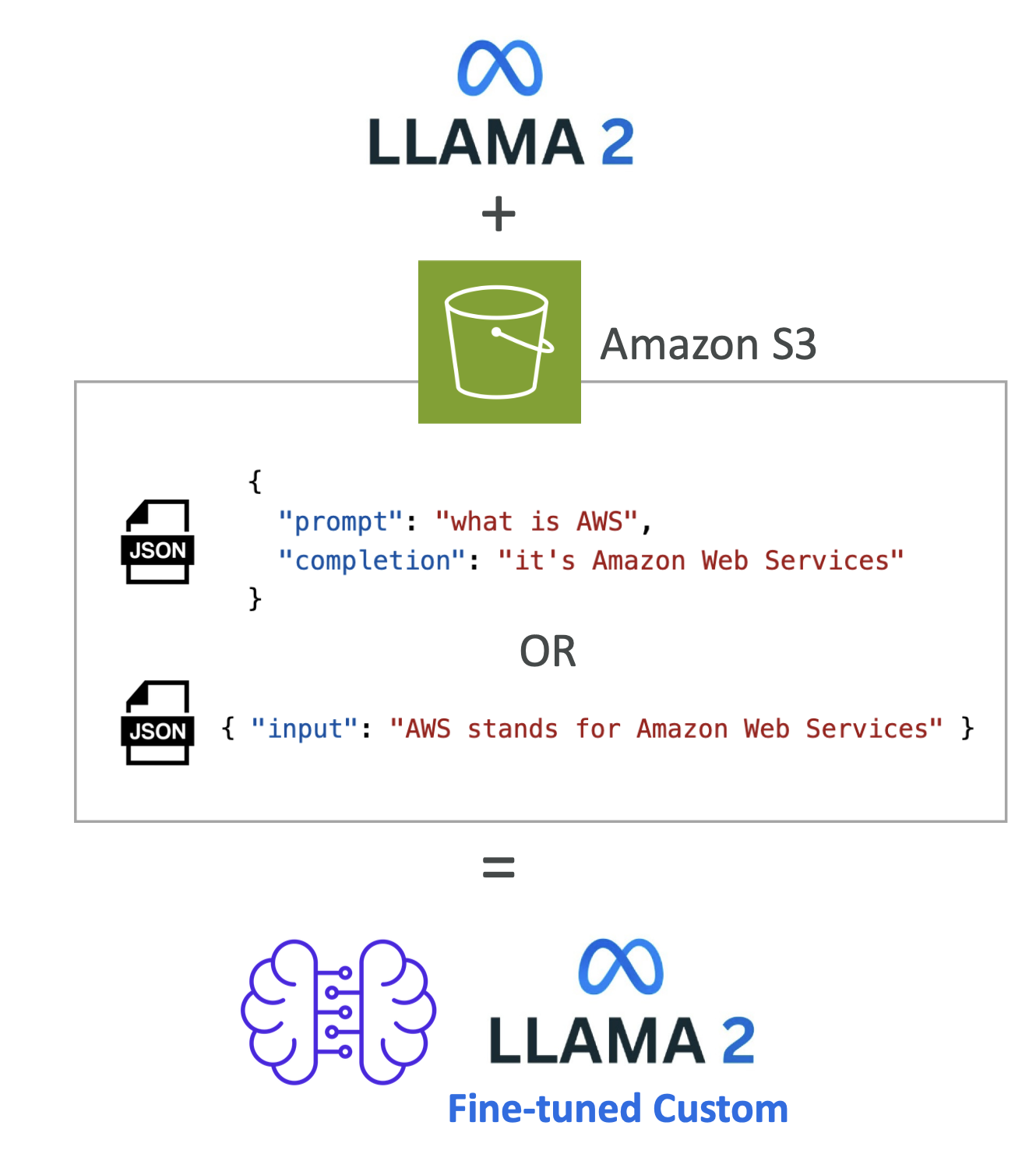
- Provisioned Throughput is required for:
- Creating the custom model
- Using the custom model
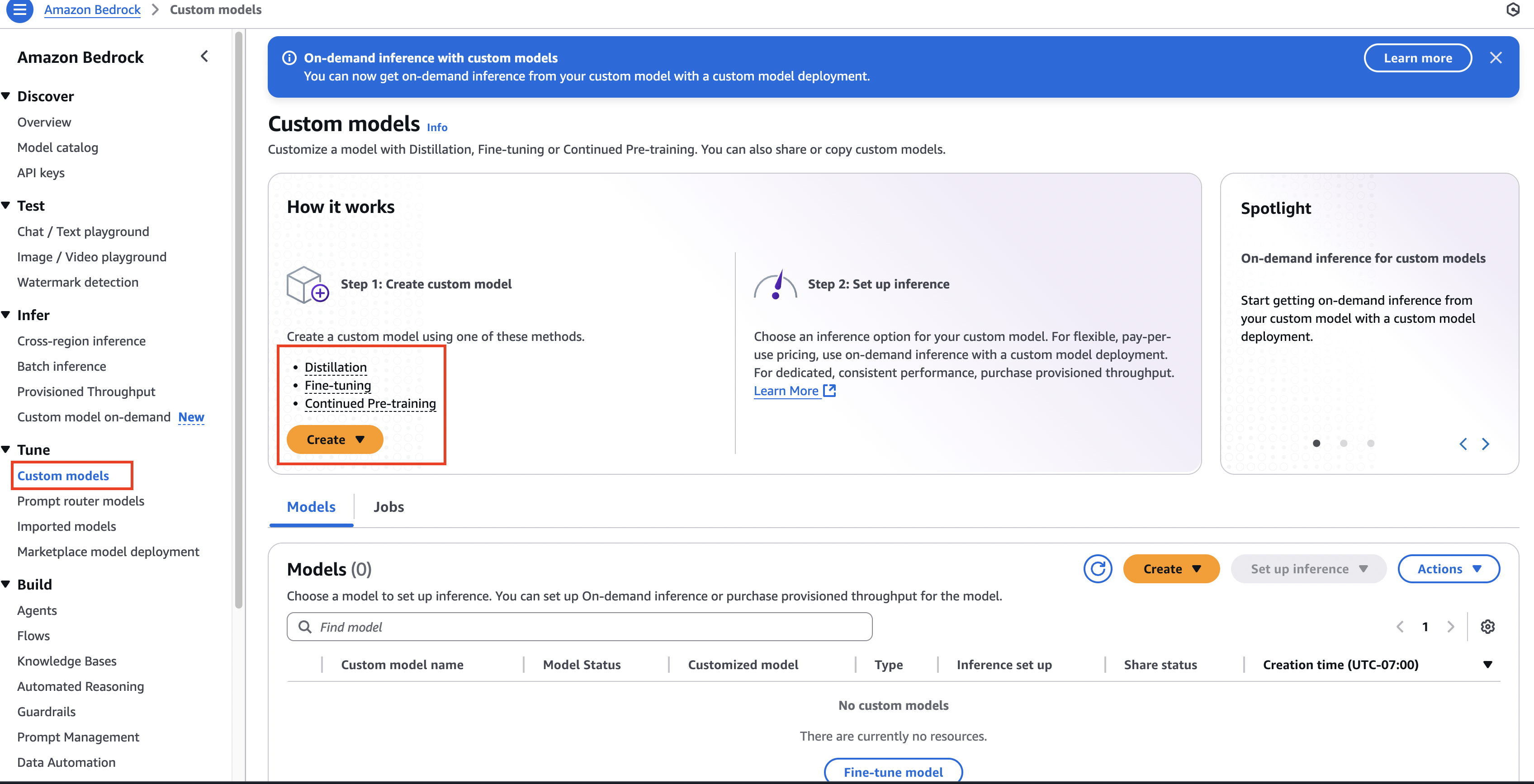


- Not all models can be fine-tuned (usually open-source models are supported).
7. Common Use Cases
- Chatbot with specific persona, tone, or target audience
- Adding up-to-date knowledge
- Integrating exclusive private data (customer logs, internal documents)
- Improving categorization, accuracy, or response style
8. Exam Tips
- Keyword Mapping:
- “Labeled data” → Instruction-based Fine-Tuning
- “Unlabeled data” / “Domain adaptation” → Continued Pre-Training
- “Adapt to a new related task” → Transfer Learning
- Provisioned Throughput is a must for custom models in Bedrock.
- Fine-tuning changes weights of the base model → creates a private version.
- Compare models not just on quality, but also latency and token cost.
9. Good to know
- Re-training an FM requires a higher budget
- Instruction-based fine-tuning is usually cheaper as computations are less intense and the amount of data required usually less
- It also requires experienced ML engineers to perform the task
- You must prepare the data, do the fine-tuning, evaluate the model
- Running a fine-tuned model is also more expensive (provisioned throughput)
10. Provisioned Throughput (AWS Bedrock)
Definition:
Reserving a fixed amount of processing capacity for your custom (fine-tuned) model.
Why Needed
- Fine-tuned models run on dedicated resources.
- Ensures consistent speed, low latency, and predictable costs.
- Prevents slowdowns during high demand.
With vs Without
- Without: Performance can drop when traffic spikes.
- With: Guaranteed performance for the reserved capacity.
Exam Tip: For custom models in Bedrock, provisioned throughput is required.
All articles on this blog are licensed under CC BY-NC-SA 4.0 unless otherwise stated.
